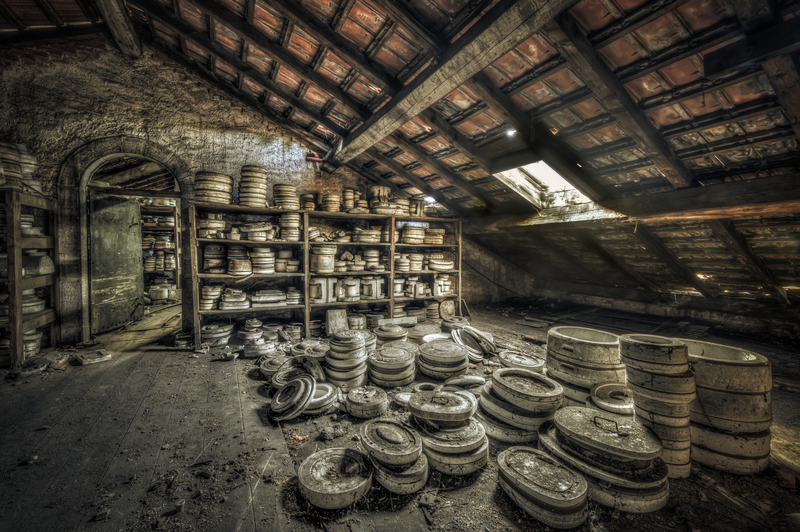Say Farewell to Grease: Step-by-Step Guide to Pristine Enamel Oven Trays
Posted on 03/07/2025
Say Farewell to Grease: Step-by-Step Guide to Pristine Enamel Oven Trays
Are your enamel oven trays looking worse for wear? Struggling with stubborn, baked-on grease that just won't budge? You're not alone! Clean, glossy oven trays don't just look good--they boost kitchen hygiene and enhance your home cooking experience. Welcome to our comprehensive, SEO-optimized guide, where we'll walk you through everything you need to know about how to clean enamel oven trays, maintain their pristine condition, and prevent grease buildup for good.

Why Pristine Enamel Oven Trays Matter
Oven trays are the unsung heroes of every kitchen, enduring high temperatures, spattering oils, and burnt-on food residues. Over time, grease accumulates on these trays, often turning into a stubborn, sticky layer that resists ordinary scrubbing. Keeping your enamel oven trays clean doesn't just improve appearance. It:
- Reduces bacteria and food contamination risks
- Prevents smoke and unpleasant odors
- Prolongs the life of your enamel trays
- Improves cooking efficiency by ensuring even heat distribution
- Enhances the taste of your meals by eliminating old grime and residues
Why Grease Sticks to Enamel Oven Trays
Enamel-coated oven trays are popular for their durability, non-stick properties, and glossy finish. However, frequent exposure to fats and sugars allows grease and carbon to bond with the enamel surface. With every use, especially at high temperatures, grease hardens and becomes more difficult to remove.
The Science Behind Grease Buildup
When exposed to heat, cooking fats and sugars break down and polymerize, forming a sticky, dark layer. Over time, these residues form a carbonized crust that normal washing methods cannot dissolve. If neglected, this crust diminishes the non-stick properties of enamel trays and promotes further buildup.
Essential Supplies for Cleaning Enamel Oven Trays
Before embarking on your oven tray cleaning mission, gather these household essentials:
- Baking soda
- White vinegar or lemon juice
- Dishwashing liquid (preferably degreasing type)
- Non-abrasive soft sponge or brush
- Microfiber cloth
- Plastic or silicone scraper (no metal, to prevent enamel damage)
- Gloves (to protect your hands from hot water and cleaning agents)
- Large basin or bathtub (if your tray is extra-large)
Optional:
- Baking powder (for added abrasiveness)
- Oven cleaner (only if safe for enamel, check label)
- Hydrogen peroxide (for stubborn stains)
Step-by-Step Guide to Cleaning Enamel Oven Trays
Step 1: Remove Loose Debris
Start by scraping off any excess food particles or burnt bits from the tray. Use a plastic or silicone scraper to avoid scratching the enamel. Discard all debris in the trash--not the sink, to prevent clogging.
Step 2: Soak the Tray
Fill your sink, basin, or bathtub with hot water and add a generous squirt of degreasing dishwashing liquid. Immerse your enamel oven tray fully and let it soak for at least 30-60 minutes. This softens stubborn grease, making it easier to remove. For particularly bad grime, consider soaking overnight.
Step 3: Tackle Stubborn Grease
For the first round of cleaning:
- Sprinkle baking soda liberally over greasy areas.
- Spray or pour white vinegar (or lemon juice) atop the baking soda. A fizzing reaction will help lift the grease.
- Let the mixture sit for 10-15 minutes. The chemical reaction breaks down carbon and grease for easier removal.
Step 4: Gentle Scrubbing
Using a non-abrasive soft sponge or brush, gently scrub the tray in a circular motion. Focus on greasy or discolored spots but don't use steel wool or abrasive pads--they can damage the enamel coating.
Step 5: Rinse Thoroughly
Rinse the tray under hot, running water. If needed, repeat steps 3 and 4 until the tray appears free of grease. For stubborn baked-on patches, reapply the baking soda and vinegar method and let sit longer before scrubbing again.
Step 6: Final Polish
After rinsing, wipe the tray dry with a clean microfiber cloth. This ensures no water spots, and leaves a shining, streak-free surface.
Special Tips for Stubborn Grease Stains
- Enzymatic Cleaners: These break down protein and fat residues--always check the label for compatibility with enamel surfaces.
- Hydrogen Peroxide: For extra-tough stains, mix hydrogen peroxide with baking soda into a paste, spread on stains, let sit for 1-2 hours, then scrub off.
- Oven Cleaner: Use only on well-ventilated areas and ensure it's enamel-safe. Rinse thoroughly afterwards.
What to Avoid When Cleaning Enamel Oven Trays
- Avoid steel wool, metal scrapers or knives--these cause scratches and can lead to flaking enamel.
- No bleach or highly caustic chemicals--they degrade the glossy enamel finish.
- Don't use extreme temperature changes (e.g., plunging a hot tray into cold water)--it can crack the enamel.
Regular Maintenance Tips for Gleaming Enamel Oven Trays
Getting your trays spotless is rewarding, but prevention is easier than cure. Here's how to keep your oven trays pristine:
- Line trays with parchment paper or silicone baking mats before use to reduce direct food contact.
- Clean trays immediately after use--while still warm (never hot), grease removes far more easily.
- Develop a monthly deep-clean routine if you bake or roast frequently.
- Avoid letting acid-rich foods (tomato, vinegar, citrus) sit long-term on enamel trays, as these can cause dulling and stains.
- Dry trays fully before storage to prevent water spots and maintain glossiness.
Pro Tips: Restoring Enamel Oven Trays
Can You Restore Damaged or Dull Enamel?
If your enamel oven tray has lost its shine or suffered minor scratches, try the following:
- Buff with baking soda paste: Mix baking soda and water into a thick paste, gently buff with a soft cloth, and rinse well.
- Apply a thin layer of vegetable oil: Rub it in with a paper towel for a glossy finish--wipe off any excess oil.
- Specialized enamel cleaners: Look for products marked safe for enamel cookware; always follow package instructions.
When to Replace Your Enamel Oven Tray
Unfortunately, if your tray's enamel is flaking, chipping, or has deep scratches exposing the underlying metal, it's time to recycle and buy a new one. Cooking on damaged enamel trays risks rust and contaminating your food with enamel particles.
The Best Products for Cleaning Enamel Oven Trays
For those who prefer commercial cleaners, here are top-rated, enamel-safe options:
- Barkeeper's Friend: Excellent for rust, stains, and safe for enamel--just use gently.
- Method Heavy Duty Degreaser: Plant-based and enamel-safe; cuts through toughest grease without harsh chemicals.
- Weiman Oven & Grill Cleaner: Formulated to be non-abrasive and safe for most cookware surfaces.
Always read labels for appropriateness and test on a small area first.

FAQs: Caring for Enamel Oven Trays
Is dishwasher cleaning safe for enamel oven trays?
Most manufacturers recommend hand washing for enamel trays, as dishwashers can cause dulling or chipping over time. If using a dishwasher, place the tray away from other metal items to reduce risk of impact.
Can you remove baked-on sugar stains from enamel?
Yes! Use a baking soda paste, let sit, then scrub gently. For caramelized sugar, fill the tray with hot water and soak for a few hours before scrubbing.
Why does my tray lose its glossy finish?
Gloss loss usually results from using abrasive tools, harsh chemicals, or constant dishwasher cycles. Stick to gentle cleaning methods and dry trays thoroughly.
Can I use lemon juice or vinegar regularly?
Yes, both are gentle on enamel and excellent for dissolving grease naturally. Overuse on damaged or scratched enamel can sometimes cause dulling, so use sparingly.
Conclusion: Keep Your Enamel Oven Trays Sparkling
In summary, saying farewell to grease and keeping enamel oven trays pristine is simple with the right methods and maintenance. Quick action after each use, routine deep cleaning with baking soda and vinegar, and avoiding harsh scrubbing tools will preserve your trays' gorgeous, gleaming finish. Remember: a clean oven tray brings better hygiene, flavor, and joy to every meal you cook and serve.
If you've found this step-by-step guide helpful, share it with fellow home cooks, and bookmark it for your next kitchen cleaning spree. Happy cooking!



